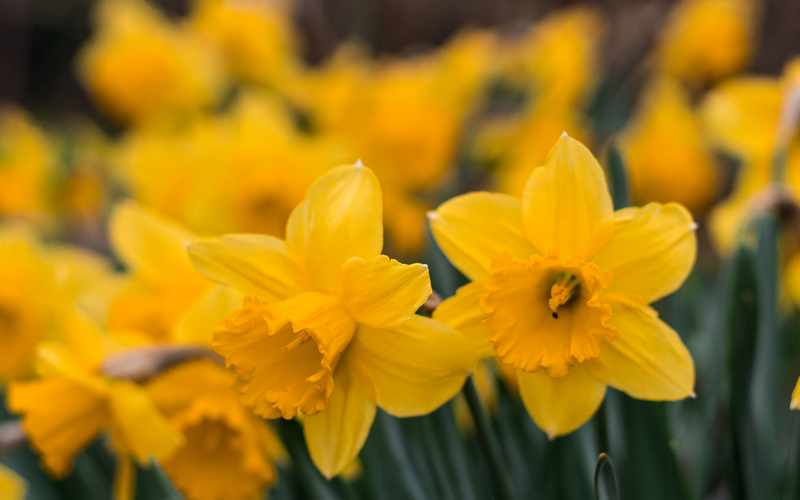
Daffodils
Among my favorite plants is the humble daffodil. The daffodil only blooms for a few weeks in early spring, but what they lack in longevity is made up for by boldly being the first real flower to emerge each year. In England, daffodils are known as the “Lent Lily” which is a lovely way of implying the foretaste of resurrection life and color that are right around the corner.
We don’t know if Jesus had a favorite flower, but I like to think that he, too, would’ve had a soft spot for the daffodil. For all the vibrancy of daffodil blooms, their bulb is rather ugly and lifeless – I think Jesus would have loved that. Jesus had a way of pointing to people, situations, and things where new life was emergent. No verses get to the heart of this more quickly than John 12:24-25.
I tell you the solemn truth,
unless a daffodil bulb goes into the ground and dies, it remains by itself alone.
But if it dies, it produces so much growth, so many spring flowers.
The one who loves his life destroys it,
and the one who hates his life in this world guards it for eternal life.
I confess that I paraphrased the Gospel here a bit! Jesus originally spoke about kernels of wheat going into the ground and dying, but the same principle holds true. In God’s Kingdom, in order to truly come alive, there is a necessary descent into relinquishment and surrender.
Die a little, live a lot!
This is the story that Jesus perfectly embodies through his Passion and Resurrection. Relinquishment leading to life. Surrender leading to Victory. Dying leading to Rising. Jesus kept teaching that it worked this way, but it’s so counterintuitive that his disciples still didn’t get it. Even 2,000 years later we struggle to comprehend and believe that this is really the way life works in the Kingdom. The humble daffodil is here to remind us that it’s true! When something or someone is 100% relinquished and released, new life and color erupt into being.
I would love to see us plant a little daffodil garden at ECRC – perhaps some tulips, too!
We need all the reminders we can get of how life really works in the Kingdom of God.
– Pastor Gregg
Below are a few pointers for the planting and nurturing of daffodils:
Daffodils should be planted in autumn, two to four weeks before the first hard frost. They are not fussy plants and will tolerate any fast-draining soil.
Daffodils thrive in sunny, warm spots that get at least 6 hours of bright sun each day.
Daffodils are known for their ability to naturalize, meaning they can spread and thrive in a garden without much intervention.
Daffodil bulbs need to be lifted and divided when the plants start to bloom less, or the flowers become smaller. This happens to daffodils after 5 to 10 years of growing in the same bed.
You can grow daffodils from seeds, but it can take up to six years to produce a bulb that is large enough to flower.